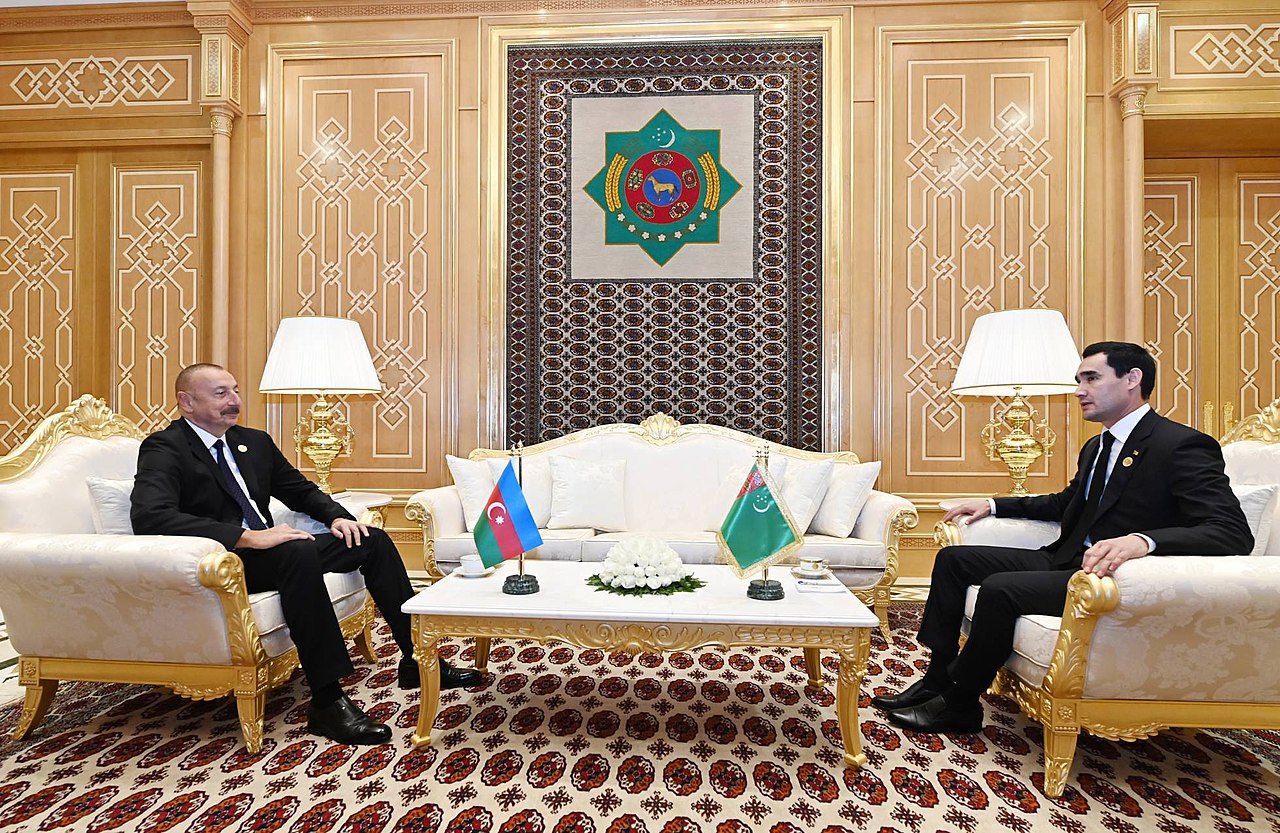Constitutional Reform in Uzbekistan: A Symposium
Svante E. Cornell, ed.
Central Asia-Caucasus Institute & Silk Road Studies Program
Silk Road Paper
December 2022
Click to Download PDF
Buy on Amazon
Introduction
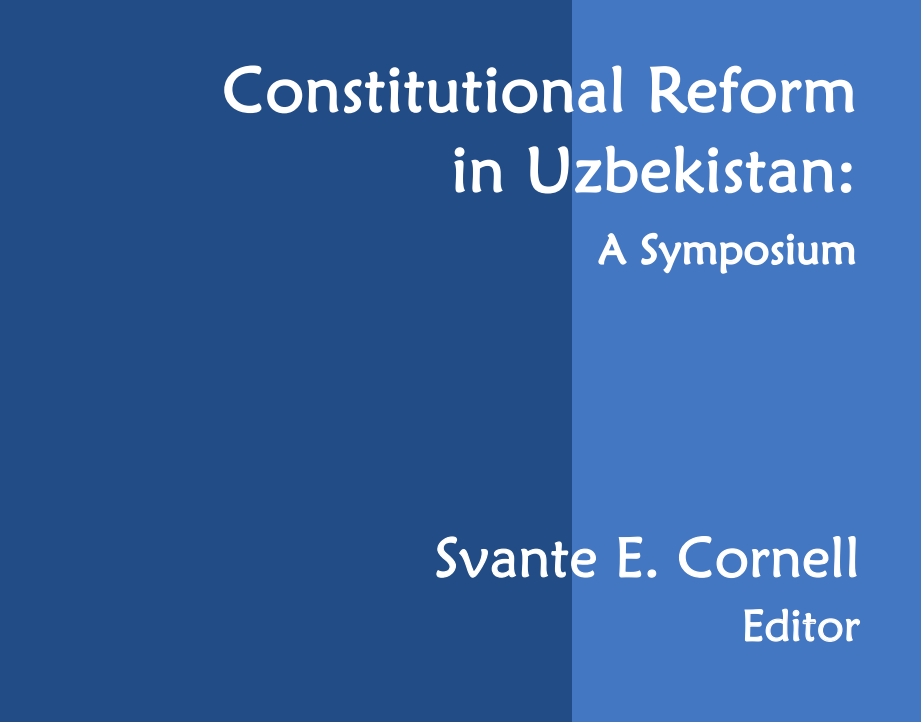 How does political change happen? This question, which has occupied the minds of scholars and analysts for many decades, has been especially vexing for the broad lands that include the Middle East and Central Asia. Samuel P. Huntington identified a “third wave” of democratization between the mid-1970s and 1990, and the collapse of the Soviet Union appeared to confirm that democracy would now spread unhindered across the world. But in the Middle East and Central Asia, this did not happen. Quite to the contrary, in spite of some liberalizing efforts in the 1990s, what occurred in this region was more akin to what Huntington, who passed away in 2008, would have called a “reverse wave” – with authoritarian governments proving not only resilient but able to consolidate control over societies.
How does political change happen? This question, which has occupied the minds of scholars and analysts for many decades, has been especially vexing for the broad lands that include the Middle East and Central Asia. Samuel P. Huntington identified a “third wave” of democratization between the mid-1970s and 1990, and the collapse of the Soviet Union appeared to confirm that democracy would now spread unhindered across the world. But in the Middle East and Central Asia, this did not happen. Quite to the contrary, in spite of some liberalizing efforts in the 1990s, what occurred in this region was more akin to what Huntington, who passed away in 2008, would have called a “reverse wave” – with authoritarian governments proving not only resilient but able to consolidate control over societies.
The political stagnation of the broader region led to considerable frustration among foreign well-wishers of these regions – and more importantly, among large strata of people in these regions that experienced heavy-handed government, mismanagement, and systematic corruption. Between 2003 and 2011, popular revolts overthrew a series of governments – first in the post-Soviet space, particularly Georgia and Ukraine, and subsequently in the Middle East and North Africa. These upheavals were met with great enthusiasm in western circles, who were convinced that democracy had finally come to the Middle East and North Africa.
Except it did not work out that way. The “Color Revolutions” in the former Soviet Union and the Arab upheavals largely failed, as no country that experienced these upheavals has progressed in a sustainable way toward democracy. Most are worse off than before these upheavals. Libya, Syria and Yemen have descended into civil war. Georgia and Ukraine were invaded by Russia, in part because of their political changes, and Kyrgyzstan descended into instability, with two additional upheavals as well as ethnic rioting. Egypt almost saw state capture by the Muslim Brotherhood, which was only undone through a military intervention that proved lasting. For some time, Georgia and Tunisia appeared to go against the grain, and make sustained progress – but in recent years, those two have backtracked significantly. While many of these societies underwent change that increased the level of pluralism in the political system, mostly they did not succeed in addressing underlying causes of public frustration, such as mismanagement and corruption. All in all, it seems clear that revolution did not prove a sustainable model to liberalize societies.
In the past several years, however, an alternative model of political change has been on display in the region – an evolutionary model of political development. Following the political and economic upheavals of the past decade, the leadership in some countries appear to have concluded that “business as usual” is no longer feasible; they must answer to popular demands for change, while seeking to manage the political process to maintain stability and avoid upheavals. As a result, they have implemented reforms from the top down, seeking to improve the efficiency of government and in a controlled and gradual manner expand political rights. This is happening in countries as diverse as Azerbaijan and Jordan, Kazakhstan and Morocco. But Uzbekistan plays a particular role because of the sheer rate of change in the country.
Nowhere is the contrast between the “before” and the “after” as dramatic as in Uzbekistan following the accession to power of President Shavkat Mirziyoyev. While paying respects to his predecessor Islam Karimov, Mirziyoyev departed dramatically from Karimov’s approach to both foreign and domestic policy, unleashing a torrent of reform initiatives that have changed Uzbek society for the better.
Of course, it should be understood that the evolutionary process of reform will not turn Uzbekistan, or any other country engaging in it, into a model democracy in the short term. That is not the purpose of these reforms. That does not mean these reforms are “cosmetic,” as they are frequently called: they are highly ambitious in scope, because they aim to fundamentally change the relationship between state and society. It should be recalled that in the Soviet system, the individual was subordinated to the all-powerful state. This in turn bred impunity and corruption, as documented already in 1982 by Soviet exile Konstantin Simis in his book USSR: the Corrupt Society. This Soviet legacy is one that in some ways continues to this day – but is one that reformist leaders like President Mirziyoyev are now trying to reckon with. In the place of the old logic, they are seeking to turn the tables, and turn state institutions into bodies that exist to serve the citizens of the country rather than to control them or extract rents from them.
This is the background to the constitutional reform process in Uzbekistan, launched in the summer of 2022. As such, it is not an isolated event, but very much a step in the process of reforms that have been introduced since President Mirziyoyev acceded to the presidency in 2016.
This process is one that the Central Asia-Caucasus Institute & Silk Road Studies Program documented in several entries in the Silk Road Papers series, and in the 2018 book, Uzbekistan’s New Face. This time, the Joint Center was pleased to have the opportunity to cooperate with the Center for Development Strategy in Tashkent to organize a Symposium on the constitutional reform process. This event, held in July 2022, provided an opportunity for Western and Uzbek researchers to exchange views on the reforms process. This publication is a collection of their presentations.
We are grateful to the authors of these papers and to the Center for Development Strategy, and particular its Director Eldor Tulyakov, for the opportunity to bring these papers to print.
Can Central Asia Seize the Initiative?
By S. Frederick Starr
October 30, 2022
https://nationalinterest.org/feature/can-central-asia-seize-initiative-205553
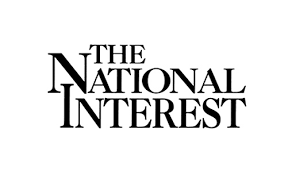
The meetings by heads of state in Issyk-Kul and Tashkent earlier this summer showed clearly that America’s abrupt departure from Afghanistan last year and its long-term neglect of Central Asia did not mark the end of history. Quite the contrary.
SINCE THEIR independence from the USSR, the five Central Asian states that emerged from the wreckage of the Soviet Union in 1991 have been the object of great power dreams. Russia, with steady persistence, has tried to lure them back into its sphere of influence, if not of direct control, through economic and security alliances. The United States and Europe have worked to develop them as market economies, and to implant civil society and democratic institutions there. Meanwhile, China assigned them key roles in its Belt and Road Initiative and loaned them billions to develop economic strengths that complement Beijing’s own. Applying Julius Caesar’s classic divide et impera maxim, all these major powers have offered rewards for cooperation and withheld them from the recalcitrant. As a result, the Central Asians risked becoming mere objects of great power maneuvers and not subjects in their own right.
This summer, the Central Asians themselves took two steps to overcome this fate. First, on July 21 the presidents of Kazakhstan, the Kyrgyz Republic, Tajikistan, Turkmenistan, and Uzbekistan, meeting at Issyk-Kul in the Kyrgyz Republic, signed a far-ranging agreement to coordinate their efforts by forging a web of institutional links. These cover areas as diverse as trade, economics, social policy, ecology, medical research, and security. Such a regional consultative structure is urgently needed. Until now, Central Asia has been the only major world region that does not have its own web of institutional ties, i.e., a structure for formulating common policies and organizations capable of implementing them. This left the region at the mercy of major powers and of neighboring states, all of which have proven adept at playing Central Asians off against each other.
Furthermore, on July 26 the same regional states, supported by senior officials from several dozen other countries worldwide, including the United States, Russia, India, the European Union, and China, convened in Uzbekistan’s capital, Tashkent, for the purpose of expanding contacts with the new government in Kabul. Their immediate goals were to eliminate threats from extremist bands operating from Afghan territory and to identify changes in Taliban policies that would open the door to broader interaction between Afghanistan, its Central Asian neighbors, and the world. These meetings covered areas as diverse as information, finance, and women’s and minority rights. Their longer-term objective was to improve relations to the point that the Central Asians could open direct transport corridors through Afghanistan to Pakistan, India, Southeast Asia, and Iran.
Whether these two ambitious initiatives will succeed is an open question. Their very existence, however, reflects the Central Asians’ determination to shape their own destiny and to emerge as a world region with linking institutions comparable to the Association of Southeast Asian Nations (ASEAN), the Baltic Council, or other regional bodies worldwide.
WHY, THREE decades after gaining independence, have the Central Asian states suddenly focused on linking arms and collaborating? Three very different developments gave rise to this important movement. First, the unplanned and abrupt American withdrawal from Afghanistan left the Central Asian countries facing a chaotic and potentially dangerous neighbor to the south. Besides threatening a rise of instability across the region, the tumult in Afghanistan extinguished the hope of opening southward trade routes that would give the Central Asians direct access to the Indian subcontinent and the booming economies of Southeast Asia. The importance of that potential “door to the south” cannot be overestimated. Without it, all Central Asia would be left under Russia’s economic and political thumb and unable to constrain China’s economic incursions. Only with such a corridor to South Asia would these countries be able to affirm their own sovereignty and independence while at the same time establishing balanced and constructive relations with all the major political and economic powers.
Second, Russia’s unprovoked invasion of Ukraine sent a shock wave across all Central Asia, not least because, like Ukraine, all the states in that region had only recently freed themselves from Russian rule and now feared that Moscow was trying to impose it anew. This was no mere paranoia on the part of the new sovereignties. Had Vladimir Putin not compared himself to Peter the Great, who expanded Russia’s territory by conquering neighbors? Had Dmitry Medvedev, head of Russia’s Security Council and former Russian president, not announced that the attack on Ukraine was but the first step towards reassembling all the lands that had formerly been part of the Soviet Union? Central Asians had already established contacts with the West, but those links did not suffice to enable them to counterbalance pressures from the north and east. The obvious next step was to create new economic and political links with South and Southeast Asia. But this requires reopening links of communication and trade that have lain dormant since the rise of the Soviet Union.
The third factor that gave rise to the new spirit of regional vitality on display at Issyk-Kul and Tashkent was the rise of Shavkat Mirziyoyev as president of Uzbekistan. His predecessor, Islam Karimov, had solidified Uzbekistan’s independence by walling the country off from its neighbors, including the other four Central Asian states and Afghanistan. Uzbekistan advanced, but at the price of the resentment of its regional neighbors and the hostility of the West, which condemned its heavy-handed treatment of its own population. Mirziyoyev, Karimov’s former prime minister, brought a sharp change of course after his election in 2016. In a series of dramatic moves, he instituted legal reforms, set about developing a market economy, and loosened many long-standing controls on the Uzbek populace. Most important, he declared peace with all Uzbekistan’s neighbors, opened cross-border contacts and trade, and began systematically reaching out to the other Central Asian states. By so doing, he launched the movement that bore fruit in Issyk-Kul and Tashkent.
What was actually accomplished in the region-wide protocol—formally known as the “Agreement on Friendship, Neighborliness, and Cooperation for Development of Central Asia in the 21st Century”—that the five presidents agreed upon in July? The document includes thirty-two sections that are designed to “consolidate their efforts” for mutual benefit. Of course, it commits signatories to respect existing borders, to not interfere in the internal affairs of other partner countries, and to resolve differences peacefully (sect. 2). But it goes far beyond this. Thus, section 5 calls for mutual support in the face of threats to the “independence, sovereignty, and territorial wholeness” of any member state. Backing up this call, the protocol (sect. 6) commits the signatories to abstain from joining any military bloc that might threaten any of the five states, and to forbid their territories to be used by any foreign state for activities directed against any of the other member states.
Nor were these mere words. Section 7 calls on the parties “to realize mutual action to develop collaboration in military and military-technical sphere on issues of mutual interest.” This parallels Article V of the Washington Treaty that governs the actions of NATO members, which states that an attack on any NATO member is to be considered an attack on them all. Section 7 also commits the signatories to coordinate their actions with respect to all other international and regional organizations to which they may belong. Among threats requiring such coordinated action are specified: terrorism, extremism, separatism, international criminal groups involved with narcotics and arms, and human trafficking. However, the same logic would extend to all other threats to the sovereignty of any member state. The goal, states the protocol, is to establish all of Central Asia as a “zone of peace.”
The many other chapters of the protocol commit members to develop structures for cooperation in legislative and judicial matters, transport, logistics (sect. 14), and all activities affecting trade and investment. The document then goes on to commit members to joint action with respect to the reconstitution of the depleted Aral Sea (sect. 19). Topping off this ambitious agenda is the call for closer links among the academic institutions of member states (sect. 20, 21), structured exchanges of teachers and specialists, the sharing of fundamental and applied research (sect. 24) in diverse fields, including medicine and technology, and the development of common information systems (sect. 23). Tourism also claims a place in the document (sect. 27), which calls for region-wide tours supported by common visas.
One may object that the five presidents papered over important differences between the languages, histories, and cultures of the signatory states. Anticipating such criticism, they went out of their way to affirm that Central Asia constitutes “a single historical and cultural space” (sect. 25), in which diverse peoples have fruitfully interacted and collaborated for millennia. Their agenda called for studying and making known these neglected commonalities. Moreover, the presidents acknowledged that within the borders of each country are linguistic, cultural, and religious minorities. On this delicate issue, they all agreed to support such minorities within their borders and enable them to thrive without compulsion from the national governments (sect. 26).
Three of the presidents signed the protocol at the Issyk-Kul meeting, while the other two—Emomali Rahmon of Tajikistan and Serdar Berdimuhamedow of Turkmenistan—gave assurances that they would sign at the next meeting of the group. The former evidently wanted first to resolve the conflict on the Tajik border with Kyrgyzstan, while the latter, in office for only three months, wanted first to consult with his colleagues in Ashgabat. Both assured their colleagues of their support for the project.
S. Frederick Starr is founding chairman of the Kennan Institute and chairman of the Central Asia-Caucasus Institute.
Social Reforms in Kazakhstan
By Albert Barro and Svante E. Cornell
Central Asia-Caucasus Institute & Silk Road Studies Program
Silk Road Paper
September 2022
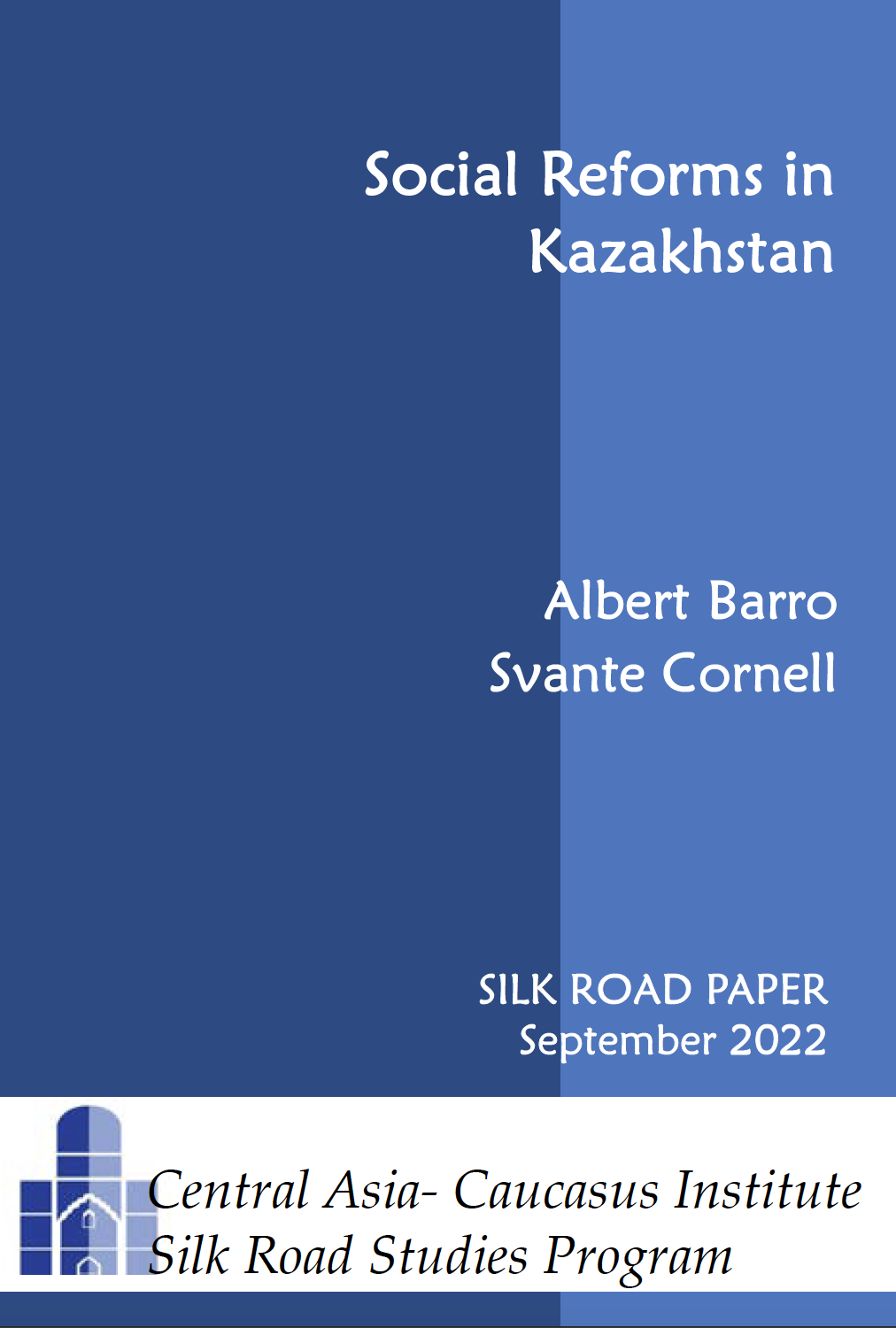 Since President Kassym-Jomart Tokayev came to power, a series of reform packages focusing mainly on the political and economic sectors have been launched in Kazakhstan. But as has been seen in instances of public dissatisfaction over recent years, social issues are at the heart of the concerns of the population of Kazakhstan – a population that saw great improvements in living standards from 1992-2008, but somewhat of a stagnation since then. Having achieved middle-income status, many people in Kazakhstan now focus increasingly on the quality and accessibility of education, healthcare, and social protection. In his September 1, 2022, address to the nation, President Tokayev acknowledged this priority by focusing considerable attention to reforms in the social sector that would improve education, healthcare and social protection and in particular provide a more equitable delivery of services in these areas to the population.
Since President Kassym-Jomart Tokayev came to power, a series of reform packages focusing mainly on the political and economic sectors have been launched in Kazakhstan. But as has been seen in instances of public dissatisfaction over recent years, social issues are at the heart of the concerns of the population of Kazakhstan – a population that saw great improvements in living standards from 1992-2008, but somewhat of a stagnation since then. Having achieved middle-income status, many people in Kazakhstan now focus increasingly on the quality and accessibility of education, healthcare, and social protection. In his September 1, 2022, address to the nation, President Tokayev acknowledged this priority by focusing considerable attention to reforms in the social sector that would improve education, healthcare and social protection and in particular provide a more equitable delivery of services in these areas to the population.
In the education sector, Kazakhstan has a history of large and comparatively successful reforms. The Bolashak (future) program, launched almost immediately following independence, provided opportunities for high-achieving students to study abroad, and over ten thousand have done so. But Kazakhstan’s reforms have not focused solely on higher education. One of the most successful programs has seen the rollout of nearly universally available preschool education, and efforts to improve the status, pay, and training of teachers in primary and secondary education. Kazakhstan joined the Bologna process, and the implementation of nternational standards has done a lot to improve the education system.
Kazakhstan also invested in elite institutions – the Nazarbayev Intellectual Schools and Nazarbayev University, which have catered to high-achieving students. These institutions have obtained ample resources and have been highly successful – NIS scores in PISA tests, for example, are high above the average in OECD countries. Kazakhstan’s difficulty has been to replicate this success across the width of the education system. Access to education in rural and remote areas remains difficult. And whereas NIS and NU have benefited from academic and financial autonomy, the same is not the case for regular schools, whose principals have much less freedom to run their institutions the way they see fit. In other words, the rest of the public school systems suffers from state bureaucracy. And regular schools – particularly in rural and remote areas – lag far behind the NIS in standardized testing. This should come as no surprise given the disproportional part of the education budget that is allocated to the NIS and NU.
The question going forward is to what degree the NIS and NU model can be replicated in the rest of the education system – which does not benefit from having selected the best students and given them the most resources.
Human resources are a particular challenge: finding qualified teachers for the needs of Kazakhstan has proven difficult, and is made even harder by the government ambition to develop trilingualism: that not only should
Kazakh, Russian and English be taught, but that certain subject matters should be taught in these languages. While the initiative is laudable, in practice the country so far lacks teachers with language skills to be able to
teach in all three languages. This suggests that some initiatives in the education sector may have been overly ambitious; but it should be recalled that Kazakhstan has aimed high; and even if it has not quite met its own
ambitions, the initiative has nevertheless produced results as can be seen from the rapid spread of English proficiency in the country.
Healthcare reforms in Kazakhstan are in many ways similar to the education sector. Certain reforms have aimed very high and proven remarkably successful. Capabilities at the high end have been developed, including a medical school at Nazarbayev University, advanced cancer treatment and research, and the development of an indigenous pharmaceutical industry. In addition, Kazakhstan has rolled out a compulsory health insurance system that is sustainable in the long run. Just as in the education sector, however, the difficulty has been in scaling these advances up to meet the needs of society as a whole. One challenge has been to provide adequate primary healthcare services that run independently of major hospital systems. Another has been to train enough medical staff to provide adequate coverage of the population. Indeed, Kazakhstan needs to double the ratio of doctors per capita to meet the OECD average. In particular, providing adequate access to medical services in rural and remote areas has proven difficult to implement.
Still, the advances are visible. Before the pandemic, Kazakhstan saw rapidly improving life expectancy numbers, reaching 73 years, a strong improvement over numbers in the 1990s. While the pandemic was a temporary setback, the country has also learnt valuable lessons on the weaknesses of its healthcare system.
In the field of social protection, Kazakhstan has succeeded in putting in place an adequate system to protect the unemployed, the disabled, as well as mothers and children. In addition, a strong and sustainable pension system has been introduced. Still, the country faces challenges: an aging population that will complicate matters, and the continued persistence of high-level corruption and mismanagement of assets and investments.
Social reforms are intimately linked with the broader reform agenda that President Tokayev has made into a centerpiece of his presidency. The success of social reforms will depend in no small part on the development of the broader management system in the country and on the nature of Kazakhstan’s state institutions. The potential of social reforms can only be fulfilled if the political reforms aiming to change the nature and culture of state institutions, to develop a new reality where the state exists not for its own sake, but to provide services to the population of the country. Given President Tokayev’s stated commitment to seeing all of these reforms through, it remains to be seen how successful Kazakhstan will be along this path.
Religion as a Factor in Caucasian Conflicts
Svante E. Cornell
Civil Wars,
Vol. 1 no. 3, 1998
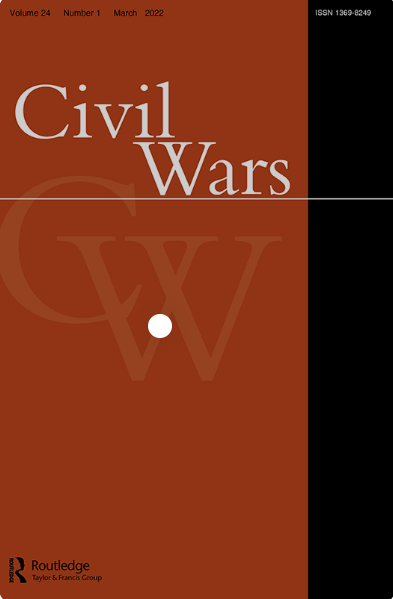 The many conflicts that have raged in the Caucasus since the end of the 1980s have often been depicted in the media and academia as basically religous in character. The religious differences between parties to conflicts are empjasized and often exaggerated. In particular, the Caucasus has been taken as an example of the 'clash of civilzations' supposedly under way. This article seeks to challenge this perception of the Caucasian conflicts, arguing that religion has played a limited role in conflicts that are actually ehnopolitical and territorial in character. The article argues that seldom are religious bodies of thinking used to legitimize conflict behaviour in this region -- there has been no Jihad in the Caucasus, for example -- nor has the politicization of the parties to a conflict been underpinned primarily by religious identity or theological perspetives. As such, religious conflict can not be spoken of. Furthermore ther has occured no rallying of outside powers along religious lines; quite to the contrary empirical evidence shows hat religious has had little impact -- especially when compared to ethnicity -- in the international ramifications of these conflicts.
The many conflicts that have raged in the Caucasus since the end of the 1980s have often been depicted in the media and academia as basically religous in character. The religious differences between parties to conflicts are empjasized and often exaggerated. In particular, the Caucasus has been taken as an example of the 'clash of civilzations' supposedly under way. This article seeks to challenge this perception of the Caucasian conflicts, arguing that religion has played a limited role in conflicts that are actually ehnopolitical and territorial in character. The article argues that seldom are religious bodies of thinking used to legitimize conflict behaviour in this region -- there has been no Jihad in the Caucasus, for example -- nor has the politicization of the parties to a conflict been underpinned primarily by religious identity or theological perspetives. As such, religious conflict can not be spoken of. Furthermore ther has occured no rallying of outside powers along religious lines; quite to the contrary empirical evidence shows hat religious has had little impact -- especially when compared to ethnicity -- in the international ramifications of these conflicts.
